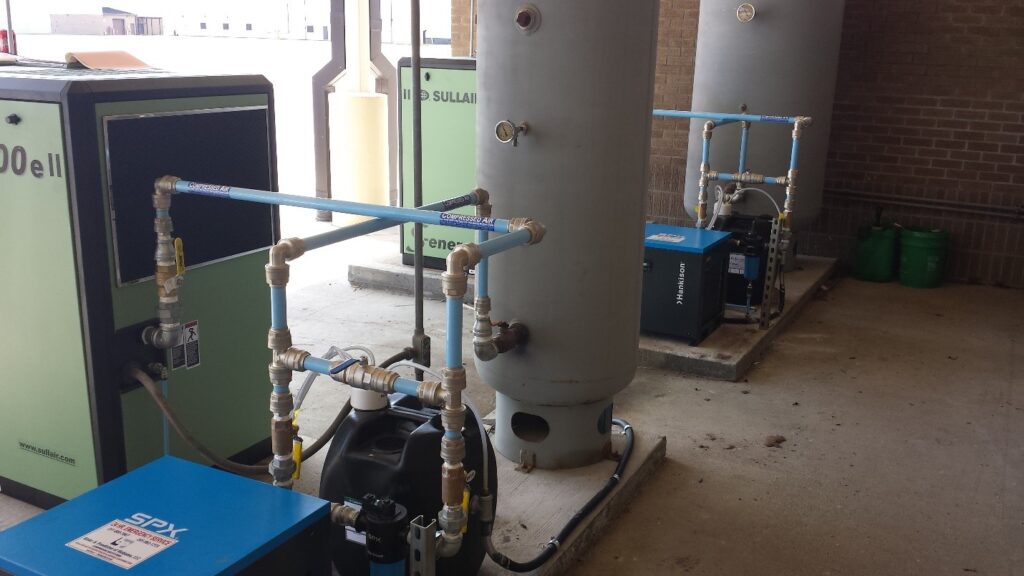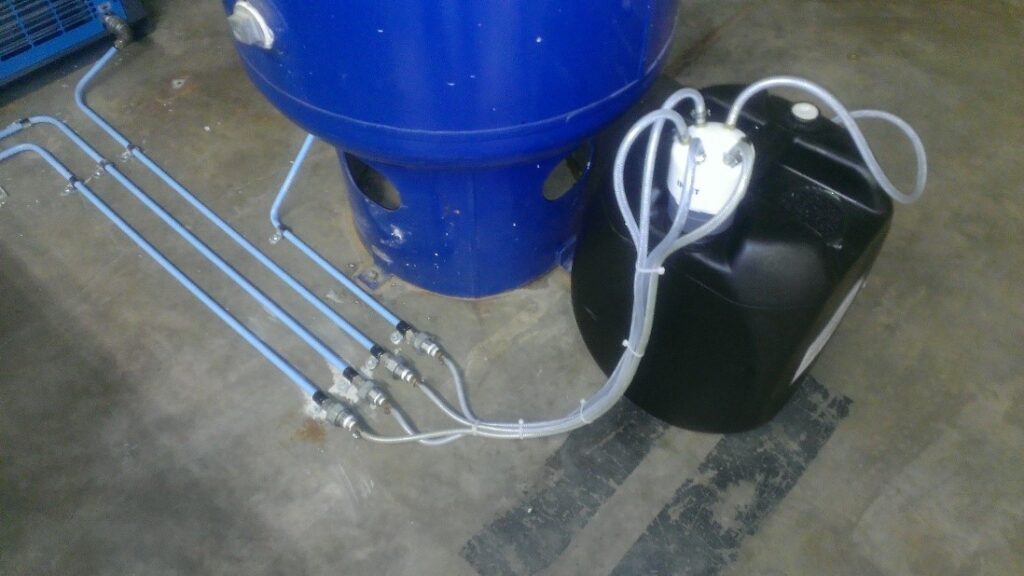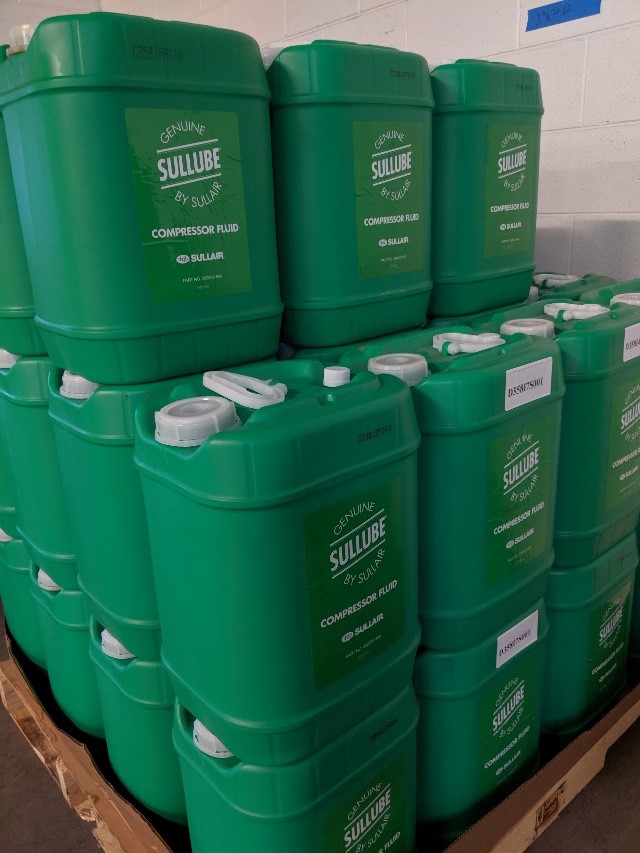If there’s one thing that can put a damper on your operations, it’s compressed air condensate. From understanding your compressed air lubricant to knowing the proper methods of disposal for condensate discharge, working out the details can seem like a hassle.
One thing is for certain: compressed air condensate requires attention. And it’s important to know how to address it to prevent it from becoming an environmental issue.
What is compressor condensate?
 Your oil flooded compressor pulls air in from its surrounding environment; air that contains moisture and other particles. As the air works its way through your compressor, it’s warmed up and cooled down, and comes into contact with your compressor lubricant.
Your oil flooded compressor pulls air in from its surrounding environment; air that contains moisture and other particles. As the air works its way through your compressor, it’s warmed up and cooled down, and comes into contact with your compressor lubricant.
At several points along the way, the collected moisture is condensed and expelled at specific locations. Condensate drain points often include your:
- Tank
- Aftercooler
- Filter
- Dryer
The resulting concoction isn’t just water; it’s laden with oil and other particles that were picked up along the way.
Ignored compressed air condensate can become an environmental issue.
There are many issues that can arise from improperly disposed of or regulated condensate. Some of these include:
- Clogging your facility sewage system
- Create safety hazard from water leakage on the floor
- Causing drainage issues for your local municipality
- Pollute nearby water sources & vegetation
- Have a negative impact on wild life
The way to avoid these issues all comes down to choosing a simple and practical solution that fits your facility needs.
How do I deal with compressor condensate?
Compressor condensate can’t be dumped on the ground or into any bodies of water. And, in most cases, it can’t be tossed into your sewage line either.
So, what are your options? Well, you have a couple of avenues you can take. Both of them involve being aware of your local regulations on how to properly dispose of oil waste.
 Oil/Water Separators
Oil/Water Separators
An oil/water separator is a popular and dependable way to filter oil and particles from your condensate. The convenience of these filters is that they are very easy to deal with and only need to be replaced about once per year.
Biodegradable lubricants
Some lubricants are inherently biodegradable and do not require a special separator for the system.
Biodegradability still does not allow you to dump the condensate into the ground and you’ll need to clear it with your local municipality before you dispose of it in your sewage line.
 Sullube 32 is a great biodegradable lubricant option for your system.
Sullube 32 is a great biodegradable lubricant option for your system.
Sullube 32 is inherently biodegradable and may meet the requirements of your local wastewater treatment facility.
While that doesn’t mean that you can dispose of undiluted Sullube into your septic line, it does mean that compressed air condensate from systems using Sullube will likely meet the low parts per million (ppm) requirements of your municipality.
*Make sure to check with your municipality before proceeding.
Water separators and biodegradable lubricants are simple options to improve your facility’s functions and limit your environmental impact.
If you aren’t sure which option is the best for your operations, Blake & Pendleton is here to help! Contact our team and we can walk you through the process and determine which condensate solution is your best fit.
Check out our oil/water separator page here.
